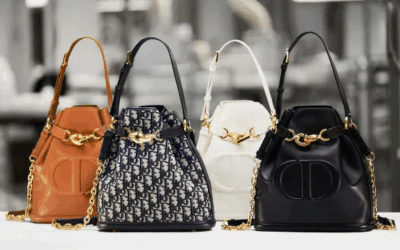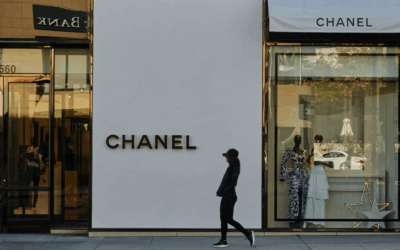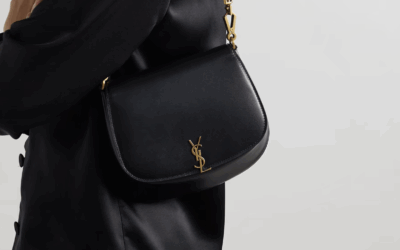 Embark on a Cosmic Journey Through the Paradoxes of Luxury and Dupes
Embark on a Cosmic Journey Through the Paradoxes of Luxury and Dupes
The $500 Birkin and the High Price of Illusion
The HERMES has long stood as the ultimate symbol of luxury—exclusive, expensive, and endlessly desired. But in recent years, the rise of high-quality replicas has disrupted this image. The once untouchable Birkin is now available in convincing forms for as little as $500, challenging the very meaning of luxury.
These so-called “superfakes” are crafted with such precision that even experts can struggle to tell them apart from the real thing. Sold through polished platforms rather than back alleys, they blur the lines between authenticity and illusion. For many buyers, the appearance of wealth now matters more than the reality behind it.
More than a fashion trend, the $500 Birkin reflects a deeper cultural shift. In an image-driven world, the illusion of success often carries more weight than its substance. And as the line between real and fake fades, we’re left asking: Is luxury still about what you own—or simply what others believe you do?

Debunking the Viral Myth
TikTok has entered its class-conscious era. A recent wave of viral posts claims your cherished French luxury handbag was likely manufactured in a Chinese factory for less than your Wi-Fi bill. Leading this digital mutiny? Tanner Leatherstein—a mild-mannered leather artisan wielding both a scalpel and the facts.
Except Tanner never actually said that.
While the internet twists his words into anti-luxury outrage bait, he’s been steadily correcting the narrative. In the realm of luxury discourse, nuance is often the first casualty.
The claim that 80% of French luxury bags are made in China is more fiction than fact—about as credible as calling Crocs haute couture. What we’re seeing isn’t a whistleblowing moment—it’s a messy convergence of online boredom, misinterpreted commentary, and an industry deeply averse to transparency.
What Tanner Actually Said
In his video, “Luxury Bags in China for 10 Percent of the Price? Let’s Talk Truth,” Tanner speaks with the calm precision of a teacher dispelling playground myths.
No, French luxury bags are not predominantly made in China. No, a real Birkin does not cost $600 to produce—that figure likely stems from someone reverse-engineering a counterfeit and crunching hopeful numbers. Yes, Chinese factories can produce top-quality leather goods, and yes, Tanner has considered working with them—for products intended for the Chinese market, where it makes strategic sense.
Hardly revolutionary stuff—unless you’re an influencer looking to spin it into a viral takedown.
Tanner isn’t an anti-luxury crusader. He’s simply a skilled craftsman who believes handbags shouldn’t be priced like compact cars. But in saying that, he touched a nerve—specifically, the fashion industry’s most sacred illusion.
And if there’s anything luxury brands hate more than counterfeits, it’s someone revealing how much of their prestige is built on suggestion.
Explore New Arrivals Here
The Pageantry of Luxury
Luxury fashion has always been part spectacle, part sleight of hand.
TikTok’s self-styled exposers play the rebels, unveiling the so-called $500 Birkin “scandal.” Meanwhile, heritage brands act as high priests, choreographing workshops to resemble shrines of artisanal worship. Tanner, whether he likes it or not, ends up the straight man in a satire of status.
Even HERMÈS, that untouchable icon, participates in the theater. Behind the veil of master ateliers lies a production model not unlike Toyota’s—minus the robots, plus the scarves. LOUIS VUITTON perfected this formula: combine human touch with mechanical scale and label it modern luxury.
“Made in France” still applies—thanks to liberal interpretations of assembly laws. It’s a passport stamp of prestige, enough to justify a five-figure price tag and a clear conscience.
So, no, the man in China selling “real” Birkins for $1,400 isn’t exposing a conspiracy. But believing every $38,000 HERMÈS bag is tenderly handcrafted by a Parisian whispering to calfskin? That’s the real fantasy.
The True Power of the Luxury Machine
This isn’t about China. Or counterfeits. It’s about control.
The luxury industry thrives within a self-contained echo chamber. From editorial features and fashion shows to storefront locations and influencer access, conglomerates like LVMH, KERING, and RICHEMONT dominate the narrative. If luxury is religion, they’re both clergy and publisher.
What Tanner is subtly questioning—when he asks why a handbag should cost more than a semester of college—isn’t just pricing. It’s the system itself. He’s exposing that you’re not buying a bag. You’re buying a fantasy. And fantasies, especially branded ones, are expensive to sustain.
Independent voices that challenge this rarely get far. When they do break through, they’re often co-opted, diluted, or branded and sold back to consumers at premium markup. Just ask HELMUT LANG—or rather, don’t. He’s been buried in PRADA’s archives, awaiting his next capsule resurrection.

Not your average knockoff shop.
The $500 Birkin Isn’t Real—But the Story Is
If you think you’ve stumbled on a secret stash of authentic HERMÈS bags for $500, allow us to save you a trip through customs and disappointment.
What you’ll find instead is a persuasive counterfeit, a slick sales pitch, and a man with flawless lighting selling you a dream. Just not the one you thought.
Luxury is, ultimately, theater. It depends on shared illusions. Call it couture cosplay with a side of exclusivity. The craftsmanship may be legitimate—but the aura? That’s art direction.
Tanner’s honesty is refreshing. But let’s be real: Transparency doesn’t move merchandise. Aspiration does.




0 Comments